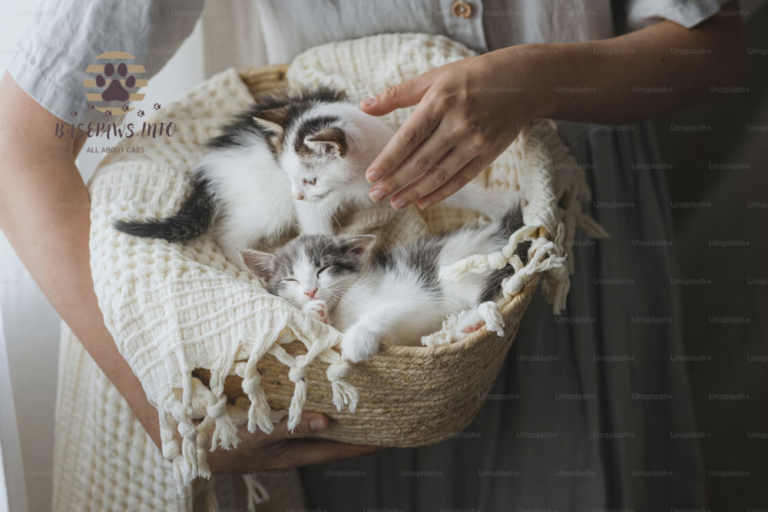13 Essential Steps to Adopting a Cat: Open Your Heart to a New Friend
Preparing to Adopt a Cat or Kitten
Adopting a cat or kitten is an exciting yet overwhelming experience. Many people are unsure where to start, from choosing the right pet to making sure their home is ready. It’s easy to overlook some key preparations, leading to stress for both the new pet and the owner. If you’re feeling confused about how to welcome a furry friend into your life, don’t worry — you’re not alone.
The process can feel daunting because there’s so much to consider. From making sure your lifestyle matches the cat’s needs to budgeting for care and supplies, it’s easy to feel unsure. However, with the right plan, adopting a cat can be smooth and rewarding, giving you and your new pet a happy start together.
Finding the Right Cat or Kitten for Your Personality
Not all cats are the same, so it’s important to find one that matches your personality and lifestyle. Cats come with varying temperaments—some are affectionate and love lounging on laps, while others are energetic, independent, or even shy. Ask yourself if you want a laid-back lap cat that enjoys snuggling, or if you’re looking for a more independent and playful companion that will keep you on your toes.
Also, consider your activity level and daily schedule. High-energy breeds like Bengals or Abyssinians require more stimulation and exercise, while more relaxed cats, such as Ragdolls, will be content with minimal playtime. Kittens, in general, need more attention, care, and training. Older cats tend to be more settled and may require less supervision but could have health issues to monitor. Choosing a cat that fits your lifestyle ensures both you and your feline companion will enjoy a long and happy life together.
Ensuring a Cat Fits with Your Lifestyle
Long-Term Commitment of Owning a Cat
Cats live for a long time, with indoor cats often reaching 15-20 years, sometimes even longer. Owning a cat is a long-term commitment, and it’s crucial to think ahead about how your lifestyle may change over time. Consider your future plans—are you prepared for potential relocations, major life events like having children, or even changes in your work schedule? These factors should be evaluated before adopting a cat. A cat will rely on you for its entire life, so ensure you’re ready for this level of responsibility.
Life Expectancy of Indoor vs. Outdoor Cats
The environment in which a cat lives can significantly impact its life expectancy. Indoor cats generally live longer, safer lives, reaching 15-20 years of age. They are protected from outdoor dangers like traffic, predators, and diseases. On the other hand, outdoor cats, while having more freedom to roam and explore, face greater risks and typically have shorter lifespans. If you prefer the idea of an outdoor cat, it’s important to take safety measures, such as providing a secure outdoor enclosure or considering cat-proofing your yard to minimize risks.
Fostering vs. Adopting: Which Option is Best for You?
If you’re unsure about a long-term commitment, fostering might be a great option to test the waters. Fostering allows you to care for a cat temporarily, which gives you the chance to see if a cat fits well with your lifestyle without the lifelong commitment. Fostering can last anywhere from a few weeks to several months, and during that time, you’ll help the cat adjust to home life while it awaits permanent adoption. This experience can also be a rewarding way to support animal shelters and help cats transition into permanent homes.
On the other hand, adopting a cat means taking on a lifetime responsibility. When adopting, you’ll need to be prepared to provide long-term care, including food, veterinary check-ups, and attention. If you’re ready to give a cat a forever home, adoption is the right choice for you. Consider fostering first if you’re uncertain or need to evaluate how a cat fits into your routine.
Indoor vs. Outdoor Living: Where Will Your Cat Live?
Deciding whether your cat will live indoors or outdoors is one of the most important choices you’ll make. Many people prefer to let their cats roam outdoors, believing it gives them freedom and a natural experience. However, outdoor living comes with risks, including traffic, predators, diseases, and exposure to harsh weather. Outdoor cats are also more likely to get lost or face harm from strangers. If you choose to let your cat explore outside, ensure they’re microchipped and wear a collar with identification. Additionally, keeping their vaccinations up to date is critical for their safety.
On the other hand, keeping your cat indoors offers a safer and more controlled environment. Indoor cats are less likely to encounter danger, but they still need an enriched environment to stay happy and healthy. You can create an engaging indoor space with toys, scratching posts, and perches for climbing. Interactive play will help your cat stay active, while cozy resting spots provide comfort. Consider using window perches or bird feeders outside windows to keep indoor cats entertained. With the right setup, indoor living can be just as fulfilling for your feline friend.
Essential Supplies for Your Cat or Kitten
Before bringing your new cat home, it’s essential to gather the right supplies. These items ensure that your new pet is comfortable and well-cared for from the moment they arrive. Having everything prepared in advance helps your cat adjust smoothly to its new environment and reduces stress for both you and your pet.
| Item | Purpose |
| Food & Water Bowls | For feeding and hydration, choose durable bowls. |
| Litter Box | Necessary for house-training; place in a quiet area. |
| Toys & Scratching Posts | Provide mental stimulation and exercise, helping to prevent boredom. |
| Cat Carrier | For safe transport to and from the vet or travel. |
| Bed/Blankets | A cozy space for your cat to sleep and feel secure. |
These supplies will help your cat feel at home right away. Scratching posts and toys encourage natural behaviors and keep your cat engaged, while a comfortable bed offers a sense of security. Make sure the litter box is in a low-traffic area to give your cat privacy. A sturdy carrier is also essential, not just for vet visits but for any emergencies that may arise.
Preparing Your Home and Family for a New Cat
Welcoming a new cat into your home is exciting, but it requires some preparation to ensure the safety of both your pet and your belongings. Cats are naturally curious and will likely explore every corner of your home, which can lead to accidents if the environment isn’t prepared. Start by removing or securing any household hazards such as toxic plants, exposed electrical cords, or small objects that could be swallowed.
Additionally, set up a designated area for your new cat to sleep and eat. A quiet space where they can retreat and feel safe is essential, especially in the first few days when they may feel nervous. Ensure family members, particularly children, understand how to gently interact with the new cat to avoid overwhelming them. By taking these precautions and making your home cat-friendly, you’re setting up a smooth transition for your new furry friend.
Choosing Where to Adopt: Shelter, Rescue, or Breeder?
Deciding where to adopt your new cat or kitten is a significant decision that can impact both your life and the life of the animal. Here’s an ordered list outlining the different options and their benefits:
- Animal Shelters
- Save a Life: Shelters provide the opportunity to rescue a cat in need and offer them a loving home.
- Diverse Selection: Shelters typically have a wide variety of cats, including kittens, adult cats, and seniors, allowing you to choose one that best fits your lifestyle.
- Health Benefits: Many shelter cats are already spayed or neutered, vaccinated, and microchipped, saving you time and money on initial veterinary care.
- Breed-Specific Rescues
- Find Your Ideal Breed: If you’re looking for a specific cat breed, breed-specific rescues specialize in rehoming particular breeds, increasing your chances of finding the cat you desire.Adoption Support: These rescues often provide information about the breed’s characteristics and needs, ensuring you are well-prepared for cat ownership.
- Consideration of Waiting Lists: Be aware that breed rescues may have longer waiting lists and stricter adoption processes compared to general shelters.
- Reputable Breeders
- Knowledge of Lineage: For those interested in knowing their cat’s exact lineage and temperament, reputable breeders offer this assurance.
- Ethical Practices: Ensure that the breeder you choose follows ethical breeding practices, prioritizing the health and well-being of their cats.
- Proper Care and Socialization: Ethical breeders provide adequate care, socialization, and veterinary attention to their animals, which can lead to healthier and well-adjusted pets.
- Avoiding Unethical Sources: Steer clear of “backyard breeders” or kitten mills, which may neglect the health of their animals in favor of profit.
Regardless of where you decide to adopt, the ultimate goal is to find a healthy, happy cat that fits your home and lifestyle, ensuring a rewarding companionship for years to come.
Introducing Your Cat or Kitten to Your Home, Family, and Other Pets
Bringing a new cat into your home is exciting, but it’s important to take the introduction process slowly to ensure a smooth transition. Start by allowing your cat to adjust to one room before giving them full access to the house. This gives your cat a safe space where they can feel secure while getting used to their new environment. Provide all their essentials—like food, water, a litter box, and a cozy bed—so they can relax and acclimate.
When it comes to introducing your new cat to family members and other pets, patience is key. Gradual introductions are crucial to avoid overwhelming your cat. For example, if you have other pets, keep them separated at first and allow them to smell each other through a door. Over time, you can let them interact under supervision to ensure things go smoothly. Avoid forcing interactions—let your new cat come to you and your family members when they’re ready. With patience and understanding, your cat will eventually feel right at home.
Veterinary Care and Vaccinations
Scheduling an initial veterinary visit for your new cat or kitten is one of the first things you should do after adoption. Regular vet check-ups are essential for maintaining your cat’s health and detecting any potential issues early on. During the initial visit, your veterinarian will likely perform a general health check, discuss feeding and care routines, and set up a vaccination schedule to protect your pet from common diseases like feline distemper and rabies.
Vaccinations are vital for preventing illness and keeping your cat healthy. Even if your cat is an indoor-only pet, core vaccines like rabies, feline distemper, and feline herpesvirus are recommended. Spaying or neutering is another important aspect of veterinary care, as it helps control the pet population and can prevent certain behavioral and health issues, such as aggression or cancer. Regular wellness visits will help ensure that your cat lives a long, healthy life.
Managing Time Alone: How Long Will Your Cat Be Home Alone?
Cats are generally more independent than dogs, allowing them to handle being alone for short periods. However, they still require attention and companionship. If you find yourself out of the house for long hours each day, it’s essential to consider how this will impact your cat. Loneliness can lead to boredom and stress, which may result in destructive behaviors like scratching furniture or excessive meowing. Here are some strategies to help manage your cat’s alone time:
- Consider Adopting Two Cats: Having a feline friend can provide companionship and playtime, reducing feelings of loneliness when you’re not home.
- Provide Engaging Toys and Activities: Interactive toys, puzzle feeders, and climbing structures can keep your cat entertained and mentally stimulated.
- Invest in a Cat Camera: A cat camera allows you to check in on your pet while you’re away, ensuring they’re safe and content.
- Create a Safe Space: Designate a comfortable area for your cat with their favorite toys, bedding, and scratching posts to help them feel secure.
- Schedule Regular Playtime: Spend quality time playing with your cat when you are home to strengthen your bond and tire them out for when you’re gone.
Understanding the Costs of Cat Ownership
Cat ownership comes with both upfront and ongoing costs that every potential owner should consider. Upfront costs may include adoption fees, which can vary widely depending on whether you adopt from a shelter, a rescue organization, or a breeder. Additionally, you’ll need to purchase essential supplies such as food and water bowls, a litter box, toys, and a scratching post.
Beyond these initial expenses, it’s crucial to plan for ongoing costs that will arise throughout your cat’s life. Regular expenses include high-quality food, litter, routine veterinary care, vaccinations, and flea and tick prevention. Unexpected medical issues may also arise, which can lead to additional vet bills. Having a financial plan in place will help ensure that you’re fully prepared for the long-term care of your furry friend. Setting aside a small monthly amount for emergencies can also help ease the financial burden of sudden expenses.
Training and Enrichment
Training and enrichment are vital aspects of ensuring your cat’s happiness and well-being. Cats need mental stimulation and physical activity to stay healthy, and incorporating training into their daily routine can help prevent unwanted behaviors. Using positive reinforcement techniques, such as treats or praise, encourages your cat to learn basic commands and good behaviors. This method can also help curb negative behaviors, like scratching furniture or jumping on counters.
In addition to training, it’s essential to provide enrichment in your cat’s environment. Engaging toys, scratching posts, and interactive play sessions can fulfill your cat’s natural instincts to hunt and explore. Consider rotating toys regularly to maintain your cat’s interest and invest in puzzle toys that challenge their minds. Setting aside dedicated playtime each day strengthens your bond and ensures your cat stays active and entertained.
Grooming and Health
Regular grooming is a critical part of keeping your cat healthy and comfortable. Brushing your cat’s fur helps reduce shedding and prevents hairballs, especially in long-haired breeds. It also allows you to check for any signs of skin issues or parasites, which can be important for early detection of health problems. Additionally, routine nail trimming is necessary to prevent discomfort and potential injuries.
Keeping an eye on your cat’s overall health is equally important. Watch for any changes in behavior, appetite, or litter box habits, as these can be signs of underlying health issues. Regular veterinary check-ups are essential for monitoring your cat’s health, keeping vaccinations up to date, and discussing any concerns you may have. Being proactive about grooming and health care will contribute to your cat’s overall quality of life.
Including Your Cat in Your Family’s Emergency Plan
Just like any other family member, your cat should be included in your emergency preparedness plan. Whether it’s a natural disaster, a fire, or a sudden evacuation, having a plan in place can ensure your cat’s safety. Start by creating a pet emergency kit that includes essentials such as food, water, medications, and a first aid kit specifically for pets.
Additionally, make sure to have a designated safe space where your cat can go during emergencies. This area should be easily accessible and stocked with supplies. If you need to evacuate, having a carrier ready and familiarizing your cat with it ahead of time will help reduce stress during the process. It’s also wise to have contact information for local shelters and veterinary clinics, ensuring that you know where to go in case of an emergency.
Conclusion: Preparing for the Big Day
By following these steps, you’ll be well-prepared for the exciting day when you bring your new cat or kitten home. Planning ahead ensures a smoother transition for both you and your new pet, allowing your furry friend to feel safe and comfortable in their new environment. With the right care, attention, and understanding, you’ll build a strong, loving relationship with your cat that can last for many years to come. Remember, the journey of cat ownership is filled with joy, companionship, and plenty of learning opportunities. Embrace the adventure, and enjoy every moment with your new feline friend!







